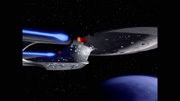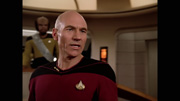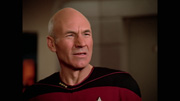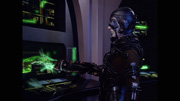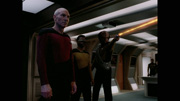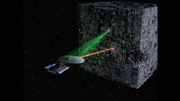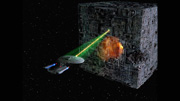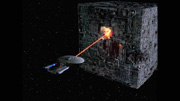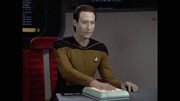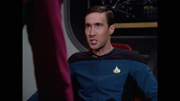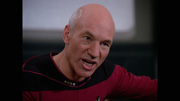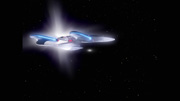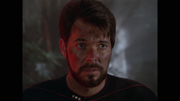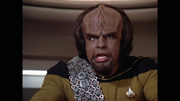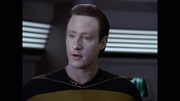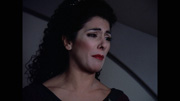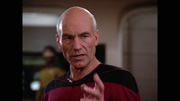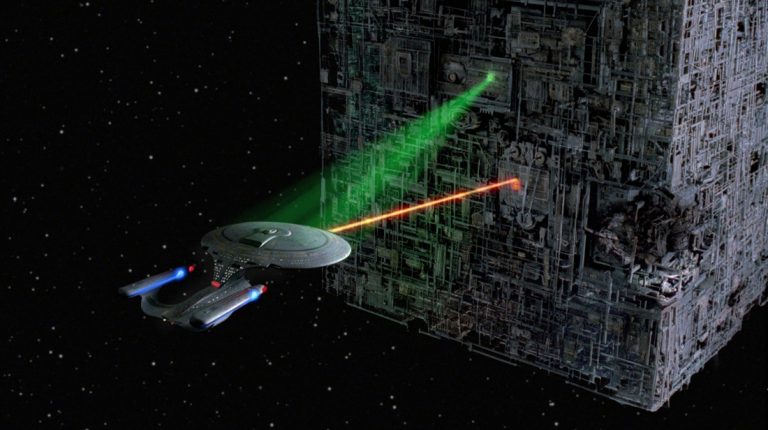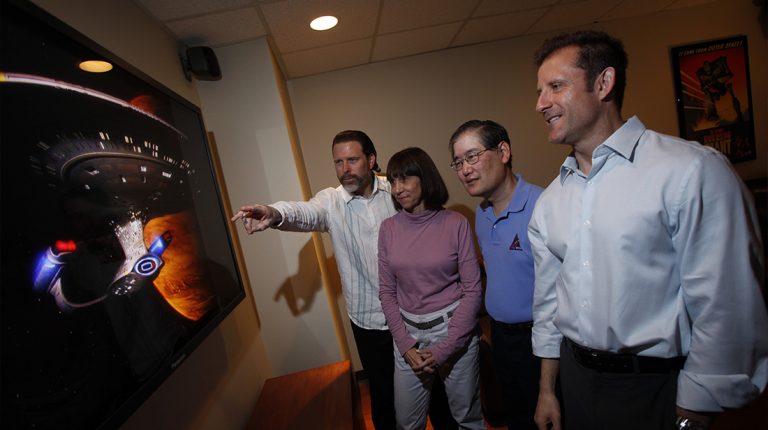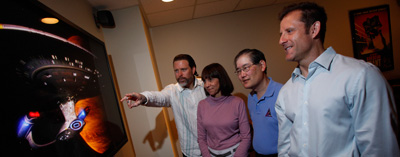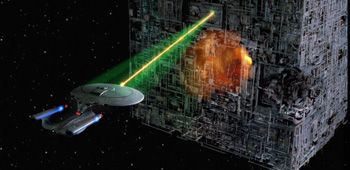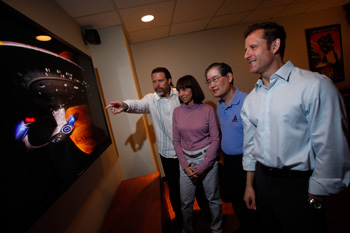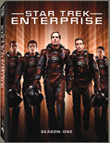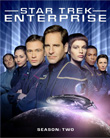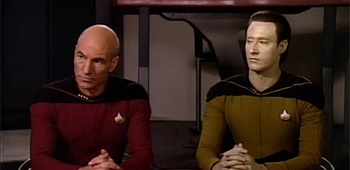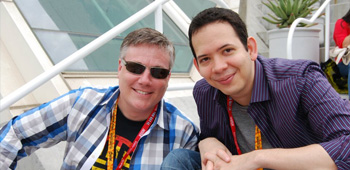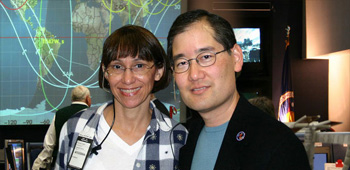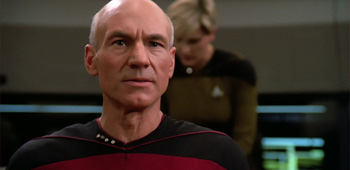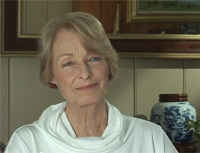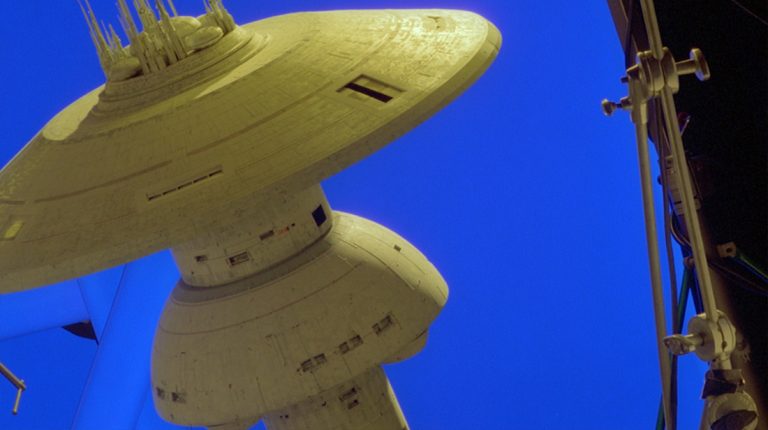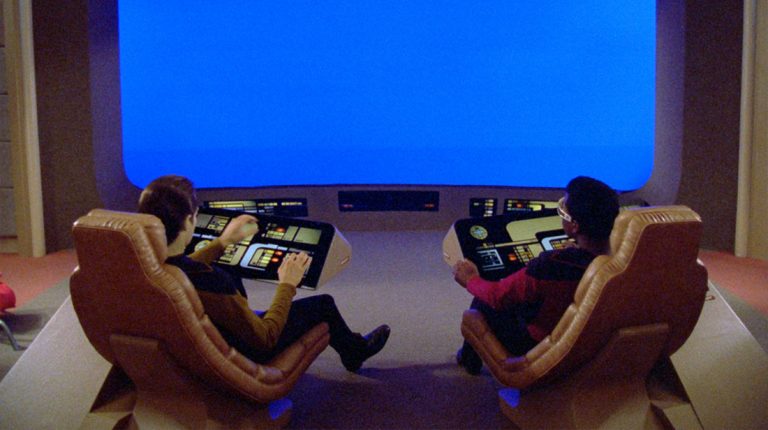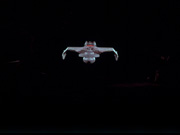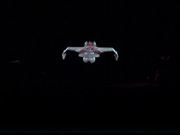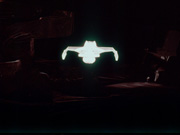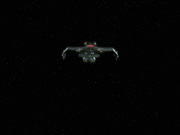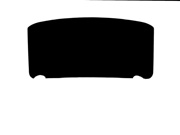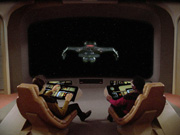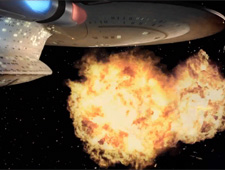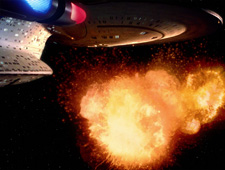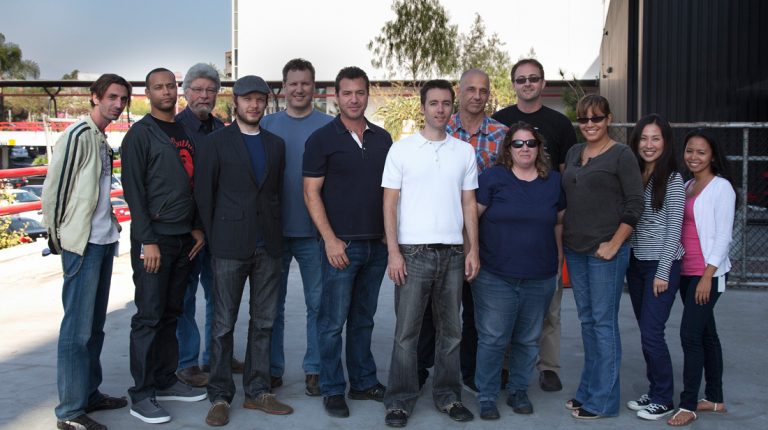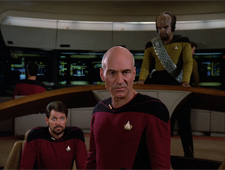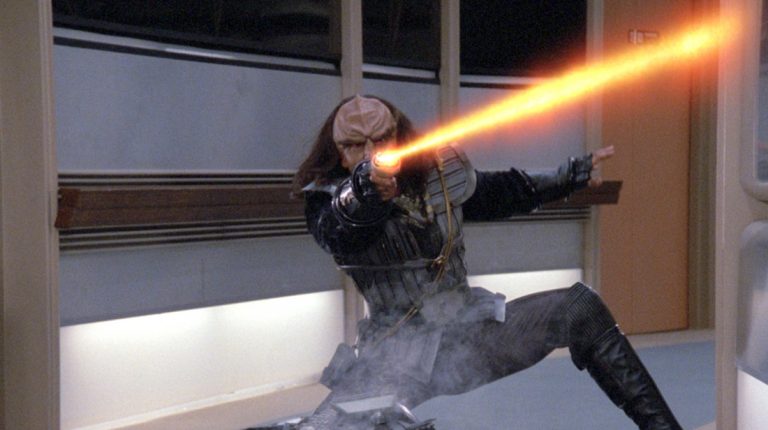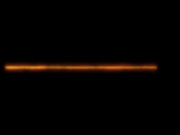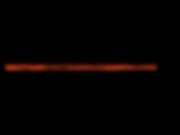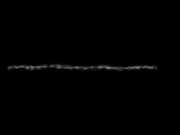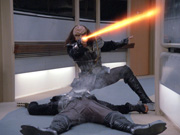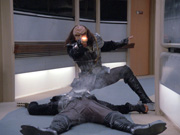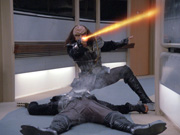A few weeks ago CBS invited TrekCore to talk with the CBS Digital team responsible for the wondrous restoration and remastering of Star Trek: The Next Generation in high definition. Craig Weiss and his team were very generous with their time and answered a huge number of questions, often very technical in nature. I hope you enjoy the resulting interview and leave with a greater understanding and appreciation for the monumental effort that this project represents, and of the wonderfully talented people who are working tirelessly behind-the-scenes to make it happen. Feel free, as usual, to leave comments and questions below.
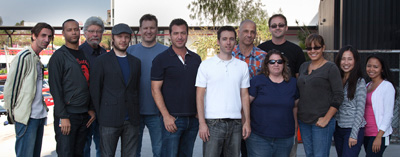
CBS Digital: TNG Remastered Interview, Part 5
Interviewed by Adam Walker for TrekCore.com

TrekCore: A lot of questions have commented on the different models of the Enterprise that have been used. The 4-foot model was brought in later on in the show and is quite maligned by fans. Fans are asking if you can replace the 4-foot, or if Sarah could conveniently lose the footage?!
Laughter
Eric Bruno: There are actually three main models that they originally used. There’s obviously the 6-foot model which seems to be the popular one, the 4-foot model which is a little more stocky and has a lot more relief on it, and there’s also the 2-foot model which is used on several occasions as well. As Craig just mentioned, our goal is to stay as true to the original as possible even if the models don’t match each other 100 per cent. If the film is there, and it’s good, we’ll use it – there’s no reason to replace or edit it, it’s not the objective of this project.
Craig Weiss: So, maybe if the fans want it… when we go to 4K we’ll do that!
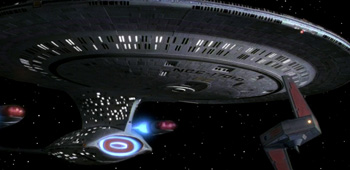
The much-maligned 4-foot model has already been seen in the blu-rays when Season 5’s ‘The Inner Light‘ was released on the sampler disc back in January 2012. As Eric Bruno explains, CBS Digital’s goal is to stay as “true to the original as possible”, which means we’ll be seeing a lot more of the 4-footer!
TrekCore: How much of the alterations or additions to the original film are known in advance from the notes that the Okudas provide for you? How much is decided during the actual process, spontaneously?
Craig Weiss: It happens kinda like this, the Okudas go through a lengthy break-down process. So, ahead of [each] episode they do a lengthy break-down – they break down each shot and give notes on each shot. And at that point, they’ll make notes in there whether something like… whether stars are going incorrectly for example, which they’d like to see fixed. There are some times when we’re in our review session where something might come up and we ask for it be addressed. For the most part, a lot of this happens in the break-downs before we start the work.
Eric Bruno: There are occasionally times when an individual artist will see something, will have a question, will ask that question – should we fix it, should we not fix it – and that answer will come from the Okudas.
TrekCore: Sarah and Wendy, do you sometimes stumble across deleted scenes or bloopers or outtakes when you’re going through the boxes, or has that material all been destroyed?
Wendy Ruiz: It’s not been destroyed. It’s just hard to identify it. There’s nothing really labelling it as an outtake or blooper. We have some notes, but not many, and when we do find notes for what we can clearly figure out to be a blooper or an outtake, we set them aside for the blu-rays.
TrekCore: So there is a chance that those will be coming on future sets?
Wendy Ruiz: That’s our hope, yes!
TrekCore: Can you tell us any more?
Wendy Ruiz: We’re barely starting our search now for Season 3 bloopers and outtakes. If we find stuff, and if it’s interesting enough, then we’ll use if hopefully.
TrekCore: Do you know if CBS are happy with the sales figures from Season 1? Is it giving them good grounds to consider remastering future Star Trek series?
Craig Weiss: We’re not privy to the sales numbers, but I know that the company has been very happy with the product and the response that they’ve got from people like you and all the different fans has been very supportive and you’re genuinely thrilled with the quality and the effort that the company has put in to making this happen. It took so many years to get this off the ground, because nobody thought that anybody could even put that amount of work in to make this happen. But [CBS] got behind it and decided that it’s such an important franchise that they had to find a way to do it. Overall it’s been a big success for everybody.
TrekCore: In the ‘Twilight Zone’ blu-rays, every episode was equipped with a separate isolated audio track for the score, the music. Is that something that is possible for you to do, or would you consider doing that in the future for TNG?
Craig Weiss: That’s interesting. Anything is possible, I don’t know what the plans would be in terms of specs or anything.
Wendy Ruiz: I haven’t heard anyone discuss it, but audio is one of the areas that we don’t really touch very much. But I’m sure if the fans started bringing up an interest, maybe we could… We’ll forward [the suggestion] on, and see if we can!
Craig Weiss: The one thing about Star Trek, and the company [CBS] is that they listen to the fans. [The Fans] also have a huge voice in this. So, they are very influential – so I’m sure if the fans … like, if the fans really wanted Deep Space Nine as a blu-ray release, the company would really look at that and take it into consideration. In this franchise, the fans really drive a lot of what happens.
TrekCore: I think that’s what’s more surprising. I know there was a large demand after Season 1 asking if future seasons were going to get audio commentaries, and now CBS are indeed doing those for Season 2. This is great to see – how much the feedback process is influencing the blu-rays, and how much CBS are taking on board.
Craig Weiss: Absolutely. That’s why the fans are so important. For future shows like Deep Space Nine, if [the fans] start lighting up those message boards that they’re so thrilled with this product and would love to see that, then the company starts to really listen to that.
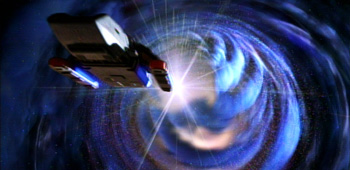
If CBS are to take the plunge through the wormhole and green-light a Deep Space Nine remastering into HD, Craig Weiss urges fans to start lighting up the message boards to show our interest – that’s when CBS “starts to really listen”
TrekCore: Winding up with some questions for everybody. What have been your best and worst moments on the project so far?
Craig Weiss: Ahh. The best moment is when we said “Yes, we’ll do it” and the worst moment is when we said “Yes, we’ll do it”!
Laughter
Craig Weiss: Honestly, for me, there’s been no real worst moment. Even with all the headaches and struggles, it’s such a joy. What makes this project unique is when you watched it 25 years ago… and everyone in this room grew up with standard definition television and before the digital era it was a snowy picture and bad colors, and then all of a sudden high-def came along and we thought ‘Wow, high-def is such a great picture’… and then we personally started scanning the film and seeing the results, it was really like seeing it again for the first time. So, whatever headaches we’ve encountered in terms of technical problems or hurdles we’ve had to go through – the finish line, and the picture, and what we’ve been working on makes that all go away and makes it all worth it and makes you want to keep going.
TrekCore: So what have been your biggest challenges?
Wendy Ruiz: Keeping it on schedule! It’s a very tight schedule, trying to get it delivered on time, and having the time to find these missing elements. We keep searching until the very last second until they tell us ‘send it down, you’ve gotta deliver this now’. So that’s the biggest challenge, trying to deliver on time.
Sarah Paul: Yes, finding the elements. My best moment was finding those 13 seconds [from ‘Sins of the Father’].
Eric Bruno: The challenging moments are when you come across a shot … like the opening title sequence of the show… 30 layers of an element and you have no idea how those 30 layers are supposed to go together. You just have to power through, and figure out in the end how those 30 layers were used. It is challenging, but when you watch the finished shot, when you watch it on the big screen – you realise you’re part of this iconic show. It doesn’t get much more satisfying than that.
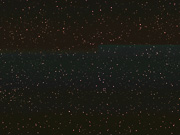 |
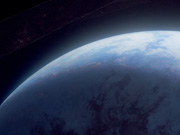 |
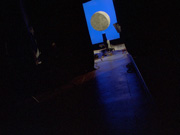 |
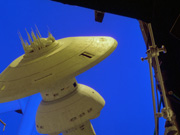 |
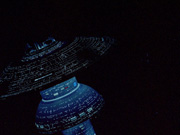 |
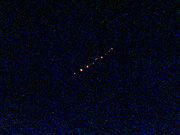 |
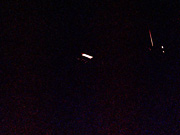 |
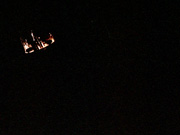 |
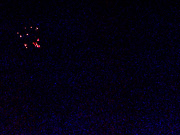 |
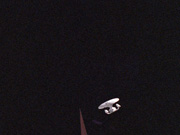 |
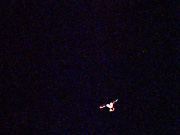 |
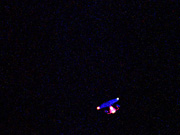 |
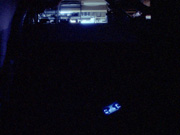 |
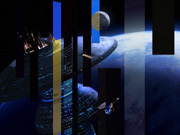 |
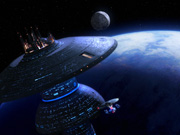 |
| A full breakdown of one of the most complicated visual effects shots from Season 1 – the Enterprise’s arrival at Starbase 74 from ‘11001001‘. A large number of different layers had to be assembled to produce the final shot and Eric Bruno and the CBS Digital team had to figure out how all the layers fit together. |
TrekCore: So my only bone to pick with you guys is why you don’t credit yourselves in the end titles?
Craig Weiss: Oh I wish we could. I think it’s just a legal issue because … ya know, we would love to, but that’s why we reach out to people like you to spread the word and give us that due credit.
Eric Bruno: We wish we could have done with the Original Series too…
Craig Weiss: Yeah, we wish we could have done the Original. So, yeah – thank you I appreciate that, and we wish we could, but unfortunately we can’t.
TrekCore: The fan feedback we’ve been getting for this project is truly unprecedented. Hundreds of emails congratulating everyone on the amazing job you did with Season 1…
Craig Weiss: Well thank you. I know they have some really amazing stuff coming up. The one thing they are truly committed to is all the extras and VAM – the Value Added Material – when it comes out each season, they’ve got something planned. This blu-ray set will not disappoint for sure.
TrekCore: Can you tease us with any future developments in future seasons?
Craig Weiss: You know, I know that they’ve announced on Season 2 they’re doing the cast reunion. They got everybody together in the same room to talk about the show. That’s been talked about. Beyond that, I think they’re developing it as we speak. We get that information as we get closer to building the blu-ray discs. As of right now, I think you pretty much know what we know. That’s where we’re at!
TrekCore: Well I’d like to thank you all for your time, it’s been a pleasure to speak to everyone.
Bruce Golin: Thanks, Adam – come and visit us soon!
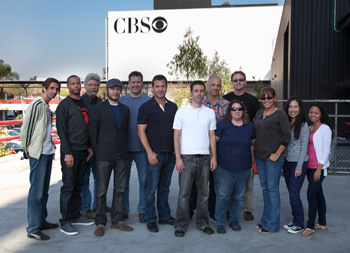
The CBS Digital team behind remastering Star Trek: The Next Generation (from left to right):
Tony Graf, Chris Payne, Loren Bivens, Eric Bruno, Niel Wray, Craig Weiss, Chris Tezber,
Max Gabl, Jimmy Berndt, Sarah Paul, Wendy Ruiz, Janice Lee, Mary Joy Macalintal
Go to Part: 1 2 3 4 5
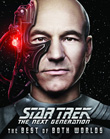 | Order TNG - "The Best of Both Worlds" Feature Blu-Ray today!

 | 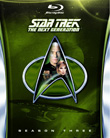 | Order Star Trek: The Next Generation Season 3 Blu-Ray today!


 |
